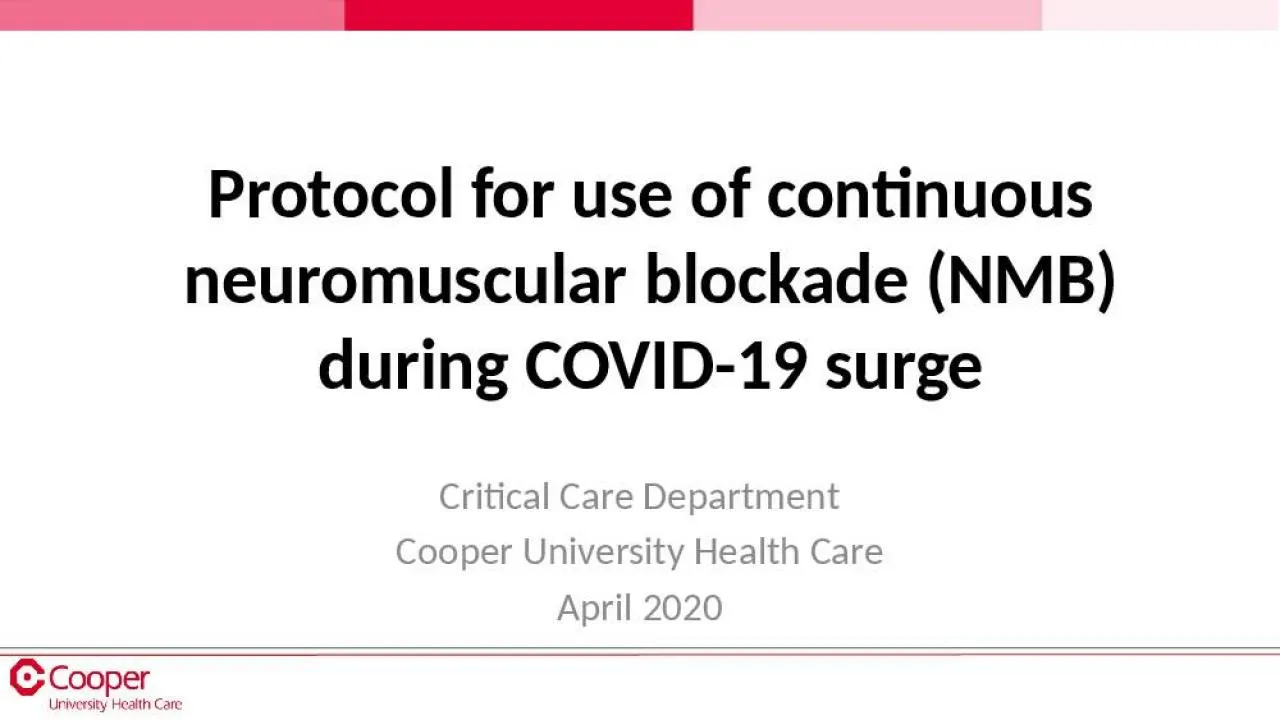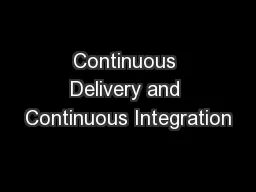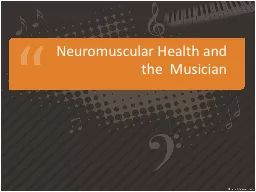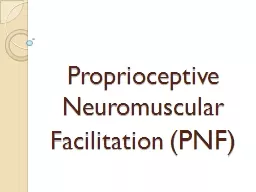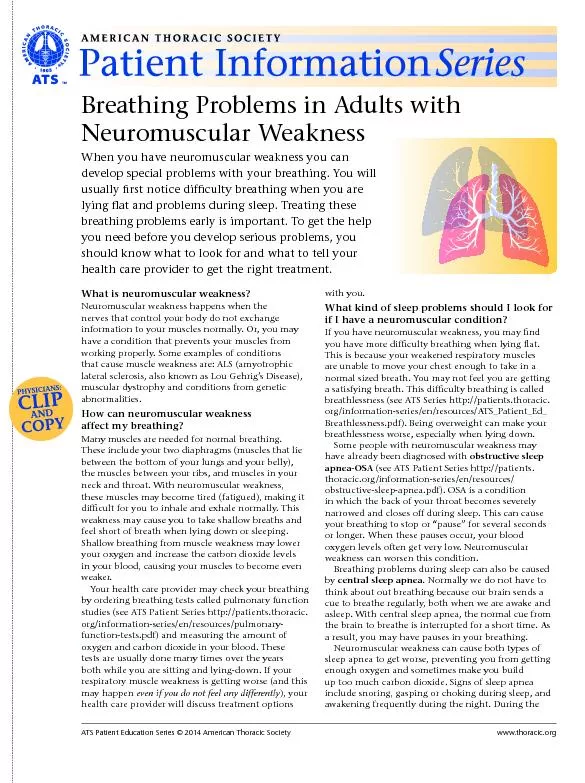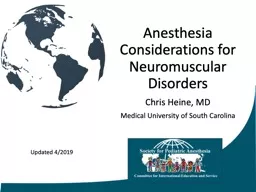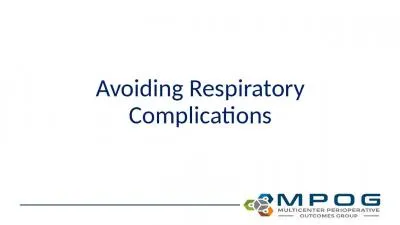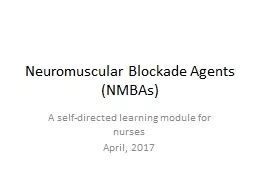PPT-Protocol for use of continuous neuromuscular blockade (NMB)
Author : oryan | Published Date : 2022-05-17
during COVID19 surge Critical Care Department Cooper University Health Care April 2020 Background Patients with COVID19 may progress to ARDS requiring use of NMB
Presentation Embed Code
Download Presentation
Download Presentation The PPT/PDF document "Protocol for use of continuous neuromusc..." is the property of its rightful owner. Permission is granted to download and print the materials on this website for personal, non-commercial use only, and to display it on your personal computer provided you do not modify the materials and that you retain all copyright notices contained in the materials. By downloading content from our website, you accept the terms of this agreement.
Protocol for use of continuous neuromuscular blockade (NMB): Transcript
Download Rules Of Document
"Protocol for use of continuous neuromuscular blockade (NMB)"The content belongs to its owner. You may download and print it for personal use, without modification, and keep all copyright notices. By downloading, you agree to these terms.
Related Documents

